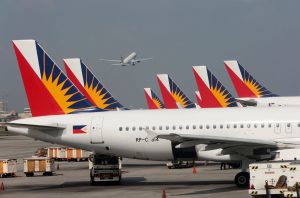CLARK FREEPORT ZONE, Philippines — Foreign investors are still bullish about the strong growth prospects of the Philippines amid concerns about rising inflation as well as the weakening peso, officials of London-based investment bank Barclays and SMBC Nikko Securities of Japan said.
“Expectations did not fundamentally change. We have been positive about the growth outlook of the Philippines for quite some time. We are still forecasting a close to 6.5 percent growth this year, probably increasing next year as the construction momentum picks up,” Barclays research director Rahul Bajoria told reporters.
He said near-term challenges about inflation and peso volatility would continue to persist but have failed to dampen the interest of foreign investors in the Philippines.
He said the Bangko Sentral ng Pilipinas (BSP) is on top of the situation in making sure inflation would be contained.
“In our opinion we do agree that inflation probably peaked in August or will peak in the next couple of months. And then it should come back in the target band probably sometime in the second quarter of next year,” Bajoria said.
Inflation leapt to a fresh nine-year high of 6.4 percent in August from 5.7 percent in July due to higher oil and food prices, weak peso, and the impact of the implementation of the new tax reform law. It averaged 4.8 percent in the first eight months, exceeding the BSP’s two to four percent target band.
This lead to a 100 basis point increase in interest rates so far this year to check inflation. The Monetary Board lifted rates by 25 basis points for the first time in more than three years on May 10 followed by 25 basis points last June 20, and 50 basis points – the biggest in a decade – last Aug. 9
Bajoria said the BSP is expected to further raise benchmark rates by another 50 basis points on Sept. 27.
He added inflation is expected to average 5.1 percent this year before easing back to the BSP target at 3.5 percent next year.
For his part, SMBC Nikko Securities (HK) Ltd. president Katsuhiko Yasui said Philippine economy is expected to benefit from its young population and rising infrastructure spending under the Build Build Build program.
Yasui said infrastructure is very important for exporters who are major source of foreign currency for the economy.
He added the country has enough foreign exchange reserves from foreign direct investments as well remittances from overseas Filipinos to finance the ballooning trade and current account deficits.
“In the short term, the peso has depreciated a little bit. Trade and current account deficits are short-term concerns. But you still have more than six percent (GDP) growth rate but also you have enough currency reserve. The situation is a little bit fluctuating right now but we feel okay,” he added.
The central bank’s Investor Relations Office (IRO) invited a group of local and regional bank analysts, portfolio strategists, and economists to view the developments in, and ongoing construction at New Clark City.
“Inviting stakeholders to witness for themselves, actual unfolding and realization of the Build Build Build program is an effective way to demonstrate the government’s commitment and political will to increase country competitiveness and to harness the Philippines’ potential as a major investment site, not only in the region, but in the world,” BSP Investor Relations Office director Elizabeth Victoria Medina-Navarro said.




